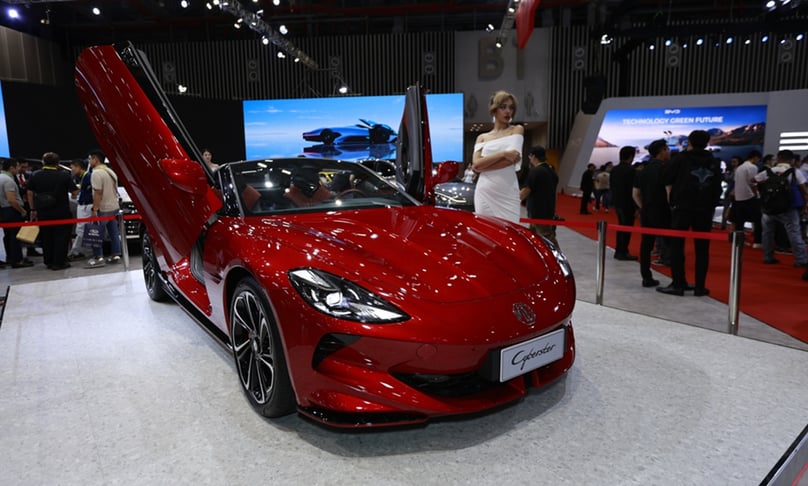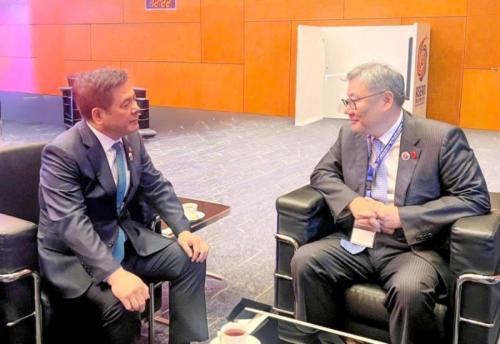Price war squeezes profit margins at Vietnam's auto distributors
Vietnam’s auto market continues to expand in size, but distributors are seeing profits erode as aggressive price competition spreads beyond luxury vehicles to mass-market segments.
Vietnam Automobile Manufacturers’ Association (VAMA) members, not including VinFast and Hyundai, sold 205,125 vehicles in the first nine months of 2025, up 6% from a year earlier, according to an association report.
Hyundai Thanh Cong reported sales of 35,802 units, while VinFast recorded a sharp jump to 103,884 units, 20% higher than its full-year 2024 sales of about 87,000 vehicles.
Total industry sales, excluding those of non-VAMA importers, reached nearly 345,000 units.
VAMA data showed uneven growth across vehicle types. Sales of internal-combustion passenger cars fell 3% to 139,250 units amid rising competition from electric and hybrid models. Hybrid sales surged 73% to 9,785 units, while commercial vehicles climbed 24% to 55,471 units.
Passenger cars using fossil fuels are facing strong competition from electric vehicles (EV - mainly from the VinFast brand) and gasoline-electric hybrid vehicles (hybrid).
In the first 9 months of the year, passenger car sales of VAMA members decreased by 3% compared to the same period last year to 139,250 vehicles.
Hybrid vehicles grew strongly by 73% to 9,785 vehicles. Service vehicles also recorded a good growth rate with a total of 55,471 vehicles sold, up 24% year-on-year.
Despite volume growth, distributors’ profitability has deteriorated under intensifying price wars.
Haxaco (HoSE: HAX), Vietnam’s largest Mercedes-Benz dealer, posted a third-quarter loss of VND25.8 billion ($980,800) after revenue dropped 25% to VND1.15 trillion ($43.72 million) and gross margin narrowed to 5.1% from 11.3%.
For the first nine months, revenue reached VND3.14 trillion ($119.37 million), but net profit fell 99% year-on-year to just VND1 billion ($38,000), with the parent shareholder posting a VND27.4 billion loss.
Haxaco said Q3 saw widespread discount campaigns not only in luxury but also in mainstream segments as rivals launched new models with deep incentives. Operating costs also rose due to expansion efforts.
PTM Auto JSC (HoSE: PTM), a subsidiary of Haxaco and distributor of MG vehicles, reported nine-month revenue up 13% to VND988 billion ($37.56 million), but net profit plunged 63% to VND33.7 billion ($1.28 million) as gross margin fell from 19.1% to 14.4%.
Savico (HoSE: SVC), part of Tasco Auto and one of Vietnam’s largest distributors, posted a Q3 net profit of VND364 billion, compared with VND6 billion a year earlier and almost quadruple its full-year 2024 profit. However, most of the gain came from VND668 billion in financial income from property sales rather than core operations.
For the first nine months, Savico’s net revenue rose 27% to VND20.55 trillion ($781.22 million) and net profit attributable to the parent reached VND450 billion ($17.11 million), up 8.6 times from a year earlier.
Still, its gross margin narrowed from 7.2% to 6.7%, while interest, selling and business management expenses increased simultaneously. Without the profit from property sales, Savico's profit would probably have decreased sharply compared to the same period last year.
Inventory and debt levels climb
All three distributors reported higher inventories at the end of Q3. Savico’s stockpile rose 40% from the start of the year to VND2.34 trillion ($88.96 million); Haxaco’s inventory grew to VND812 billion (up VND152 billion); and PTM’s surged to VND345 billion from VND127 billion.
Industry analysts note that high inventories typically raise financing and storage costs, forcing further price cuts to clear stock - a dynamic that compresses profit margins.
However, in Vietnam, Q4 is always the most exciting time of the market. The demand for shopping beforeTet(Lunar New Year holiday) is always high. Customers no longer want to wait long to get a new car. This forces businesses to reserve a certain amount of goods if they do not want to lose market share to competitors.
Savico’s total borrowings rose to VND5.61 trillion ($213.27 million), up VND1.5 trillion from the start of the year. Haxaco’s short-term debt edged up to VND719 billion, and PTM’s jumped from VND26 billion to VND180.5 billion.
With thin margins and intense rivalry, carmakers are turning to niche segments to sustain growth. Ford launched its first fully electric model in Vietnam in September, while Suzuki and Mitsubishi plan new imported models from Indonesia in Q4. VinFast is preparing to introduce a two-seater electric city car.
According to a 2024 KPMG report, Vietnam’s auto demand is projected to reach 800,000-900,000 units by 2025 and about 1.8 million by 2030.
That outlook points to an increasingly fierce battle - not only among brands but also among distributors - to preserve margins and manage cash flow amid intensifying competition.
Source: Anh Vu, Thai Ha
Photo: Photo courtesy of VAMA





